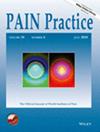10.复杂区域疼痛综合征
IF 2.7
3区 医学
Q2 ANESTHESIOLOGY
引用次数: 0
摘要
导言 复杂区域性疼痛综合征(CRPS)是一种临床疾病,可在手术或创伤后发生。根据最突出的潜在病理生理机制,CRPS 可分为不同的亚型,即炎症型、神经痉挛/神经病理性型、血管运动型和运动型。根据亚型的不同,可以采用个性化的治疗方法。如果保守治疗不足或无效,可能会建议采用更具侵入性的治疗方法。本文概述了对CRPS的最新见解,并讨论了最常见的侵入性治疗方法。结果双膦酸盐可有效治疗炎症亚型,而氯胺酮可缓解非痉挛性/神经病理性亚型的疼痛。交感神经阻滞可有效解决血管运动障碍。对于有难治性症状的患者,神经刺激是一种可行的选择,因为它具有针对所有亚型的多机制特性。结论 CRPS 是一种使人衰弱的疾病,病程难以预测。治疗效果因人而异。当保守治疗效果不佳时,建议根据潜在的亚型逐步过渡到侵入性治疗。本文章由计算机程序翻译,如有差异,请以英文原文为准。
10. Complex regional pain syndrome
IntroductionComplex regional pain syndrome (CRPS) is a clinical disorder that can develop following surgery or trauma. Based on the most prominent underlying pathophysiological mechanisms, CRPS can be classified into different subtypes, namely inflammatory, nociplastic/neuropathic, vasomotor, and motor. Depending on the subtype, personalized treatment can be applied. If conservative treatments are insufficient or ineffective, more invasive treatments may be recommended. This article provides an overview of the most recent insights into CRPS and discusses the most common invasive treatments.MethodsThe literature regarding interventional treatments for CRPS has been systematically reviewed and summarized.ResultsBisphosphonates are effective in treating the inflammatory subtype, while ketamine can provide pain relief for the nociplastic/neuropathic subtype. Sympathetic blocks are effective in addressing vasomotor disturbances. For patients with refractory symptoms, neurostimulation is a viable option due to its multimechanistic properties for all subtypes. End‐of‐line motor disturbances may benefit from intrathecal baclofen.ConclusionsCRPS is a debilitating condition with an unpredictable course. The effectiveness of treatment varies from patient to patient. When conservative approaches prove insufficient, gradual progression to invasive treatments based on the underlying subtype is recommended.
求助全文
通过发布文献求助,成功后即可免费获取论文全文。
去求助
来源期刊

Pain Practice
ANESTHESIOLOGY-CLINICAL NEUROLOGY
CiteScore
5.60
自引率
3.80%
发文量
92
审稿时长
6-12 weeks
期刊介绍:
Pain Practice, the official journal of the World Institute of Pain, publishes international multidisciplinary articles on pain and analgesia that provide its readership with up-to-date research, evaluation methods, and techniques for pain management. Special sections including the Consultant’s Corner, Images in Pain Practice, Case Studies from Mayo, Tutorials, and the Evidence-Based Medicine combine to give pain researchers, pain clinicians and pain fellows in training a systematic approach to continuing education in pain medicine. Prior to publication, all articles and reviews undergo peer review by at least two experts in the field.
 求助内容:
求助内容: 应助结果提醒方式:
应助结果提醒方式:


